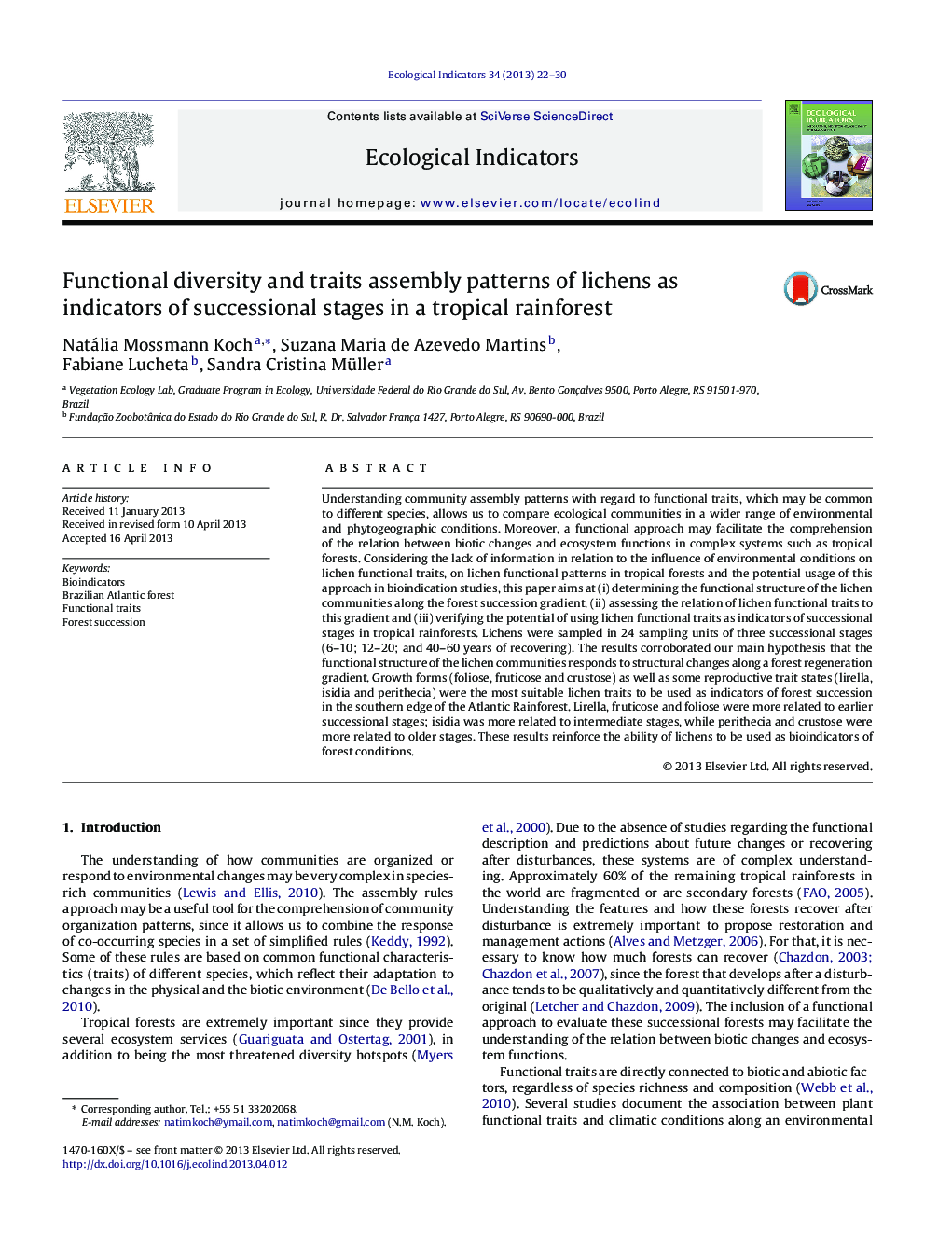| کد مقاله | کد نشریه | سال انتشار | مقاله انگلیسی | نسخه تمام متن |
|---|---|---|---|---|
| 6295230 | 1617166 | 2013 | 9 صفحه PDF | دانلود رایگان |
عنوان انگلیسی مقاله ISI
Functional diversity and traits assembly patterns of lichens as indicators of successional stages in a tropical rainforest
ترجمه فارسی عنوان
تنوع عملکردی و ویژگی های الگوهای مونتاژ لیسه ها به عنوان شاخص های مراحل جانشینی در جنگل های بارانی گرمسیری
دانلود مقاله + سفارش ترجمه
دانلود مقاله ISI انگلیسی
رایگان برای ایرانیان
کلمات کلیدی
موضوعات مرتبط
علوم زیستی و بیوفناوری
علوم کشاورزی و بیولوژیک
بوم شناسی، تکامل، رفتار و سامانه شناسی
چکیده انگلیسی
Understanding community assembly patterns with regard to functional traits, which may be common to different species, allows us to compare ecological communities in a wider range of environmental and phytogeographic conditions. Moreover, a functional approach may facilitate the comprehension of the relation between biotic changes and ecosystem functions in complex systems such as tropical forests. Considering the lack of information in relation to the influence of environmental conditions on lichen functional traits, on lichen functional patterns in tropical forests and the potential usage of this approach in bioindication studies, this paper aims at (i) determining the functional structure of the lichen communities along the forest succession gradient, (ii) assessing the relation of lichen functional traits to this gradient and (iii) verifying the potential of using lichen functional traits as indicators of successional stages in tropical rainforests. Lichens were sampled in 24 sampling units of three successional stages (6-10; 12-20; and 40-60 years of recovering). The results corroborated our main hypothesis that the functional structure of the lichen communities responds to structural changes along a forest regeneration gradient. Growth forms (foliose, fruticose and crustose) as well as some reproductive trait states (lirella, isidia and perithecia) were the most suitable lichen traits to be used as indicators of forest succession in the southern edge of the Atlantic Rainforest. Lirella, fruticose and foliose were more related to earlier successional stages; isidia was more related to intermediate stages, while perithecia and crustose were more related to older stages. These results reinforce the ability of lichens to be used as bioindicators of forest conditions.
ناشر
Database: Elsevier - ScienceDirect (ساینس دایرکت)
Journal: Ecological Indicators - Volume 34, November 2013, Pages 22-30
Journal: Ecological Indicators - Volume 34, November 2013, Pages 22-30
نویسندگان
Natália Mossmann Koch, Suzana Maria de Azevedo Martins, Fabiane Lucheta, Sandra Cristina Müller,
